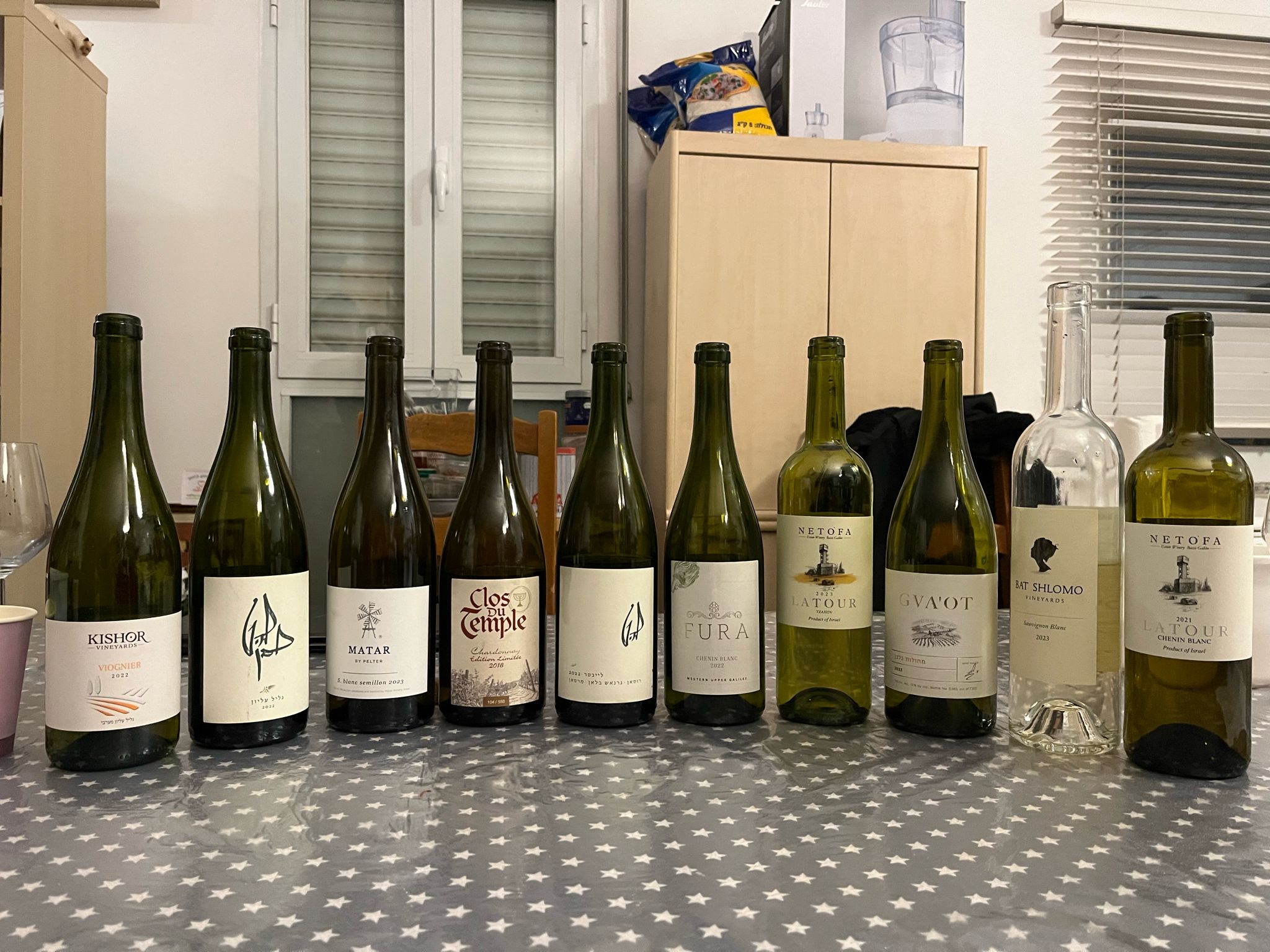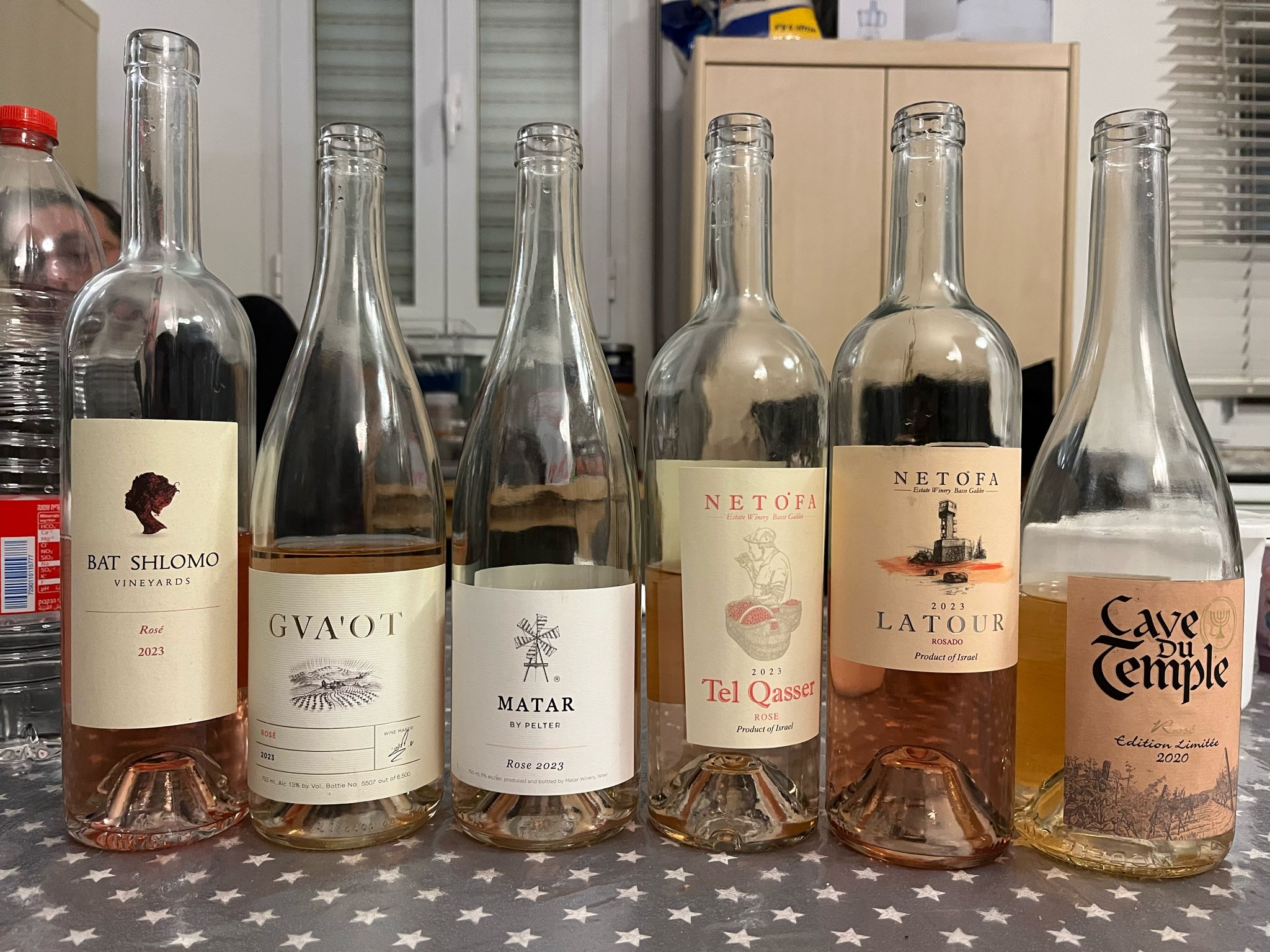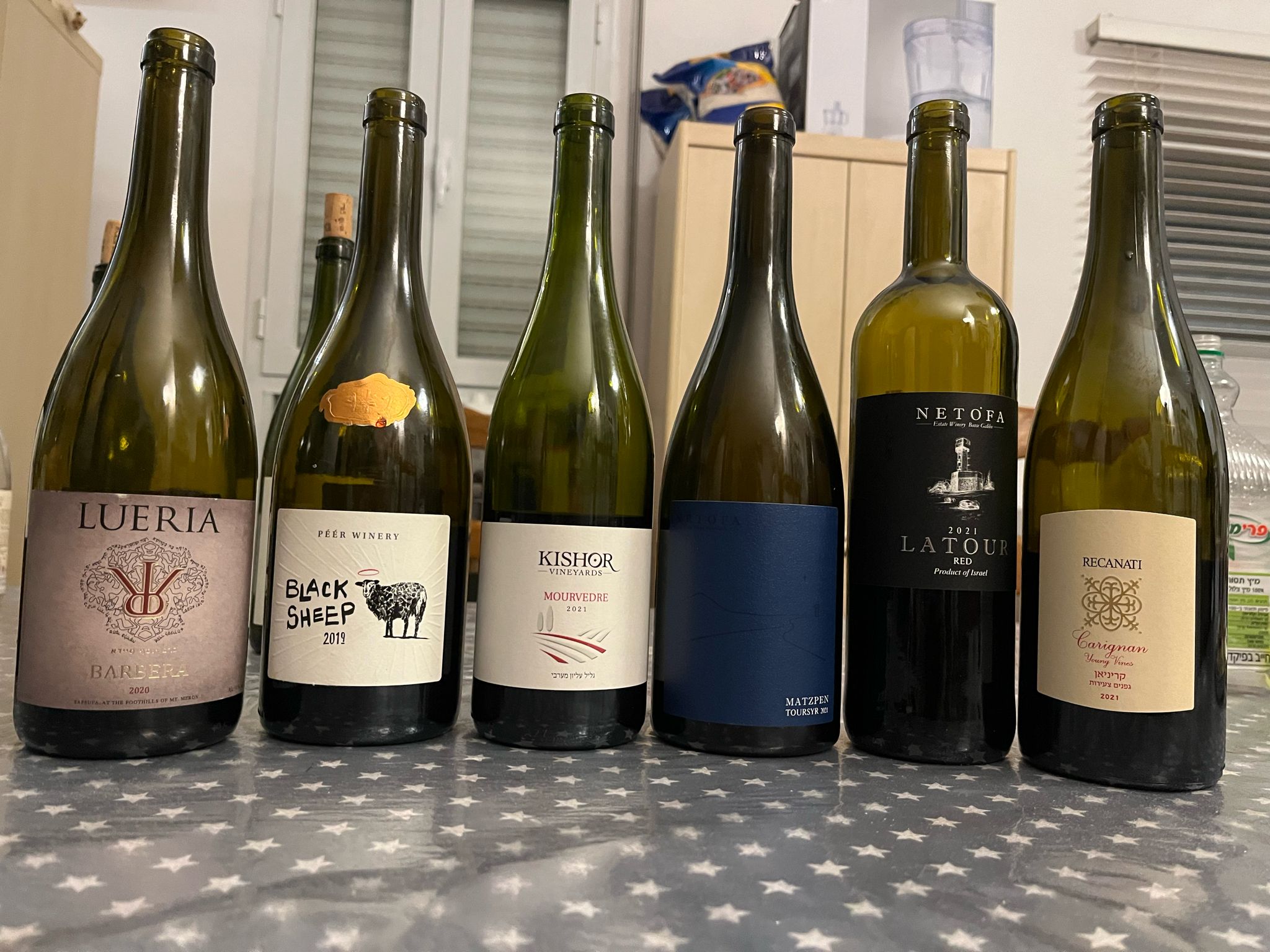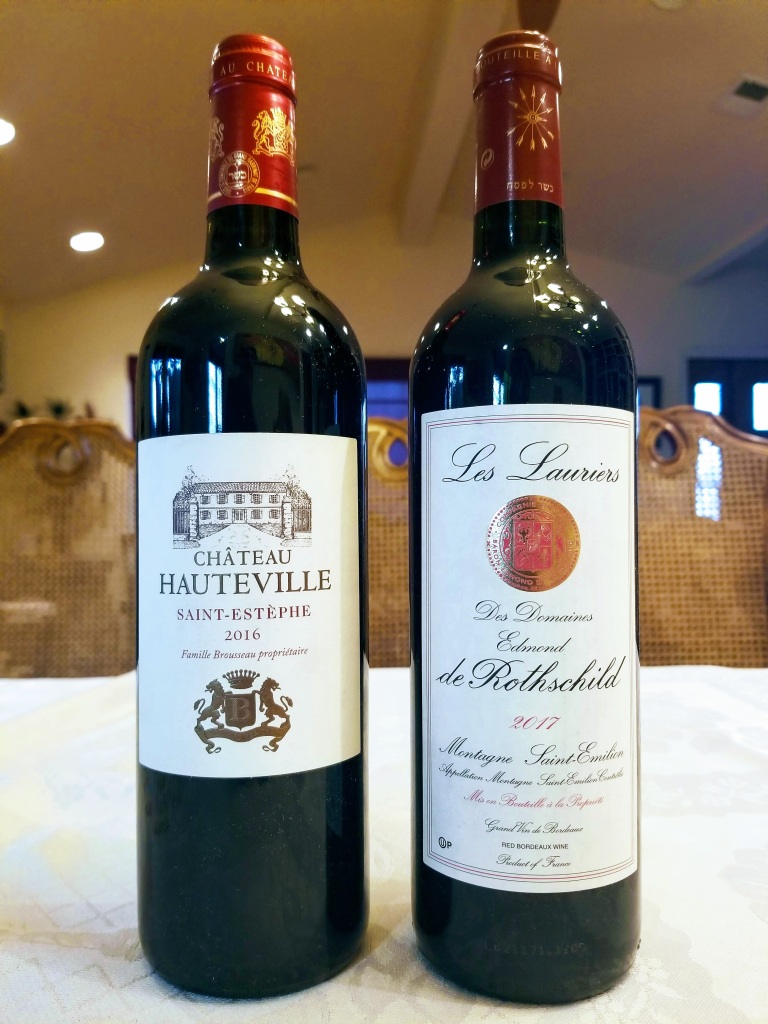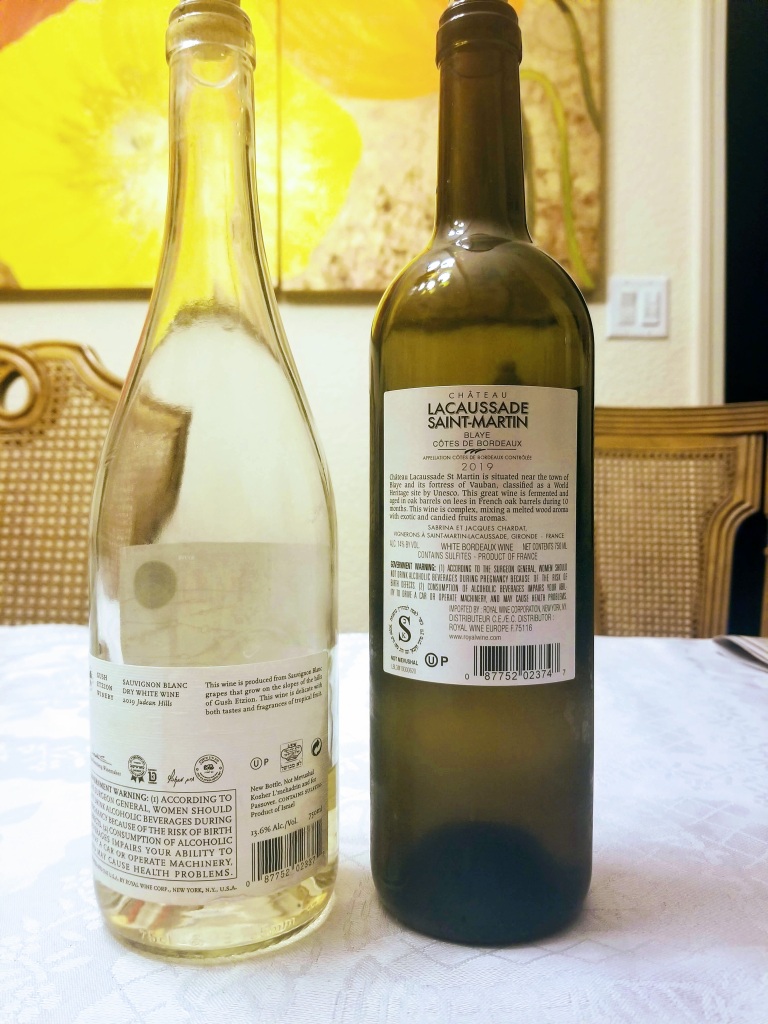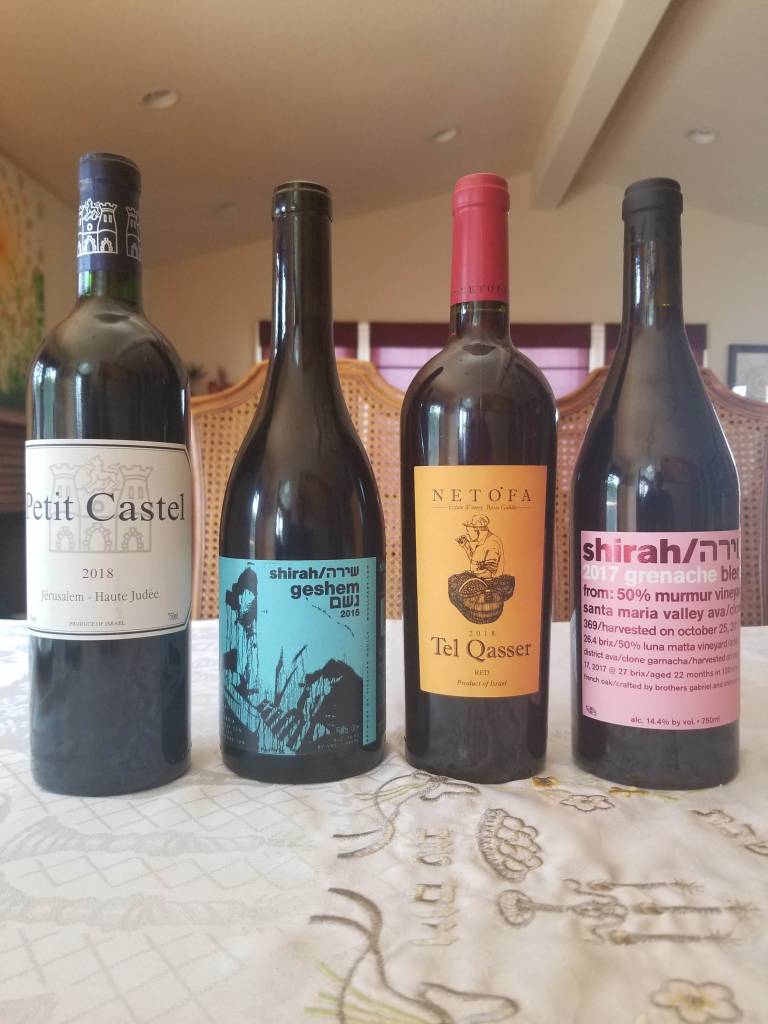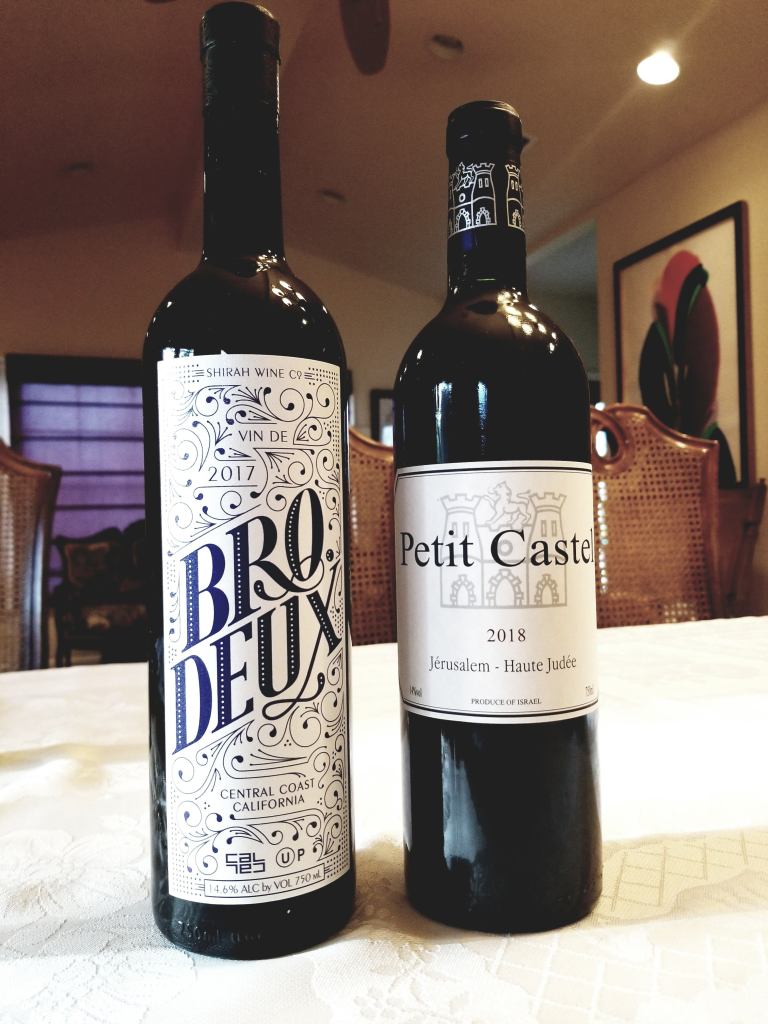Blog Archives
Another round of QPR (Quality to Price Ratio) Hits and Misses, Seven QPR WINNERS – August 2022
OK, with all the Paris wine notes posted, the latest roses posted, and Herzog’s wonderful wines, I am finally at the finish line. This last batch of notes catches me up just in time before the next round of wines shows up. As usual, my QPR posts are a hodgepodge of wines but thankfully we have some nice QPR (Quality to Price Ratio) wines.
QPR (Quality to Price Ratio) Wines
It has been two months since my last QPR (Quality to Price Ratio) post and many people have been emailing me about some unique wines I have tasted and some lovely wines that are worth writing about.
Thankfully, no matter how much garbage and pain I subject myself to, we are still blessed with quite a few wonderful QPR wines out there. This post includes some nice wines and some OK wines with the usual majority of uninteresting to bad wines.
The story of 2021 Israel whites and roses is very unfortunate, it started with a bang. Matar and a couple of others showed very well. Sadly, after that, every other white and rose wine from Israel was not as impressive. They all show middling work and product, very disappointing indeed. Thankfully, this round has three Israeli WINNERS and two from the 2021 vintage. There is an 8th WINNER here but it is here for documentation purposes and not for advice on what to buy, as it is not available anymore. That being the 2012 Chateau Serilhan.
We have a nice list of QPR WINNERS:
- 2012 Chateau Serilhan Cru Bourgeois, Saint-Estephe (Posted as I have never posted this yet, strange)
- 2021 O’Dwyers Creek Sauvignon Blanc, Marlborough – A perennial WINNER
- 2021 Castel La Vie Blanc Du Castel, Judean Hills – Finally a 100% Sauvignon Blanc and it is lovely!
- 2021 Sheldrake Point Riesling, Dry, Finger Lakes, NY – A lovely 2nd vintage
- 2021 Sheldrake Point Gewurztraminer, Finger Lakes, NY – Another lovely 2nd vintage as well
- 2021 Golan Heights Winery, Yarden Sauvignon Blanc, Galilee – A nice wine
- 2019 Netofa Latour, Red, Galilee
- 2020 Terra di Seta Chianti Classico, Chianti Classico – Perenial winner
There were also a few wines that are a slight step behind with a GREAT or GOOD QPR score:
- 2021 Cape Jewel Chenin Blanc, Reserve Collection – one of two wines that shocked me as I expected PAIN
- 2021 Unorthodox Sauvignon Blanc, Paarl – the 2nd shocking wine in this tasting
- 2020 Dalton Sauvignon Blanc, Reserve, Galilee
- 2021 Golan Heights Winery Sauvignon Blanc, Gilgal – not as good as his bigger brother
- 2021 O’Dwyers Creek Chardonnay, Marlborough
- 2021 Capcanes Peraj Petita, Montsant – one of the best Petita since 2015, still not a WINNER like in 2015
There are a few wines that got a QPR Score of EVEN – meaning expensive or average:
- 2021 Vitkin Israeli Journey, White, Israel
- 2021 Gush Etzion Gewürztraminer, Judean Hills
- 2021 Yaffo White, Judean Hills
- 2019 Ramon Cardova Rioja, Rioja
- 2020 Capcanes Peraj Ha’abib, Montsant – nothing interesting but better than previous vintages
- 2020 Domaine du Castel Lavie, Rouge du Castel, Jerusalem Hills
- 2016 Vitkin Cabernet Franc, Galilee – Drink up!
- 2018 Vitkin Carignan, Judean Hills – Drink up!
The others are essentially either OK wines that are too expensive, duds, or total failures:
- 2016 Vitkin Shorashim, Israel – a nice enough wine but the price is crazy
- 2020 Flam Cabernet Sauvignon, Reserve, Galilee
- 2020 De La Rosa Taryag Gruner Veltliner, Burgenland
- 2020 De La Rosa Chai 18 White Welsch Riesling, Burgenland
- 2021 Unorthodox Chenin Blanc, Coastal Region
- 2021 J. De Villebois Pouilly Fume, Loire Valley – so sad after last year’s lovely vintage
- 2021 Odem Mountain Chardonnay, Volcanic, Galilee
- 2016 Laufer Cabernet Sauvignon, Special Reserve, California – ripe oak juice
- 2021 Golan Heights Winery Mount Hermon White, Galilee
Some things that made me stand up and take notice (AKA QPR WINNERS):
The real WINNER here, from the entire list, is the 2012 Chateau Serilhan Cru Bourgeois, Saint-Estephe (posted as I have never posted this yet, for some strange reason), but of the available wines that would be the 2021 O’Dwyers Creek Sauvignon Blanc, Marlborough. The 2020 O’Dwyers Creek Sauvignon Blanc, Marlborough ran out very quickly, I guess that there was not much available or made, as it was right at the start of COVID! The crazy story of how it all came together.
So happy to see Castel finally dropped the Gewurztraminer from their La Vie Blanc Du Castel the solo Sauvignon Blanc is lovely!
Talking about Gewurztraminer, the 2021 Sheldrake Point Riesling and Gewurztraminer from the Finger Lakes shows one can make lovely and reasonably priced wines from the Finger lakes. Bravo Ari!
Nice to see a Yarden wine on this list again, other than the LOVELY sparkling wines, the 2021 Golan Heights Winery, Yarden Sauvignon Blanc hit on all marks.
The last two wines are red and while I loved the 2019 Netofa Latour, Red at the start, it seemed to fall off a bit and that is unfortunate. Finally the 2020 Terra di Seta Chianti Classico, Chianti Classico is not as good as the 2019 vintage but still a solid wine.
Other wines of note (AKA QPR GREAT or GOOD):
The fascinating wines from this list were the South African wines, the 2021 Cape Jewel Chenin Blanc, Reserve Collection, and the 2021 Unorthodox Sauvignon Blanc, Paarl. I had zero expectations for these wines, so they were a nice find.
The rest are just good enough wines, mostly well priced but not interesting to drink.
Wines that are either good but too expensive or average (AKA EVEN):
This list is also boring, the only real wine to call out, is the 2020 Capcanes Peraj Ha’abib, Montsant, nothing interesting but better than previous vintages. The same for the Peraj Petita in the category above.
The rest of the wines are not interesting to me and are on this list because of either quality or price.
Wines that are either OK but far too expensive or bad wines (AKA POOR/BAD):
Like on previous versions of these lists there will always be a nice scoring wine that is so expensive it falls into this QPR list. That would be the 2016 Vitkin Shorashim, Israel – a nice enough wine but the price is crazy.
There are also, many duds to losers and I will just leave you to peruse the names and scores down below.
Roundup
Overall another nice list of QPR WINNERS and some GREAT options as well. I can always look at these kinds of lists and say there are only 7 or 8 wines I would want to buy from this entire list, but that would be a defeatist attitude. The correct way to classify this list is we have 7 or 8 more wines available to us and in the end, as I have stated many times now, I cannot buy all the WINNER wines even if I wanted to. There are just too many good wines out there and that is what we should be focused on!
The wine notes follow below – the explanation of my “scores” can be found here and the explanation for QPR scores can be found here:
Older Wines that I have not posted (or revising):

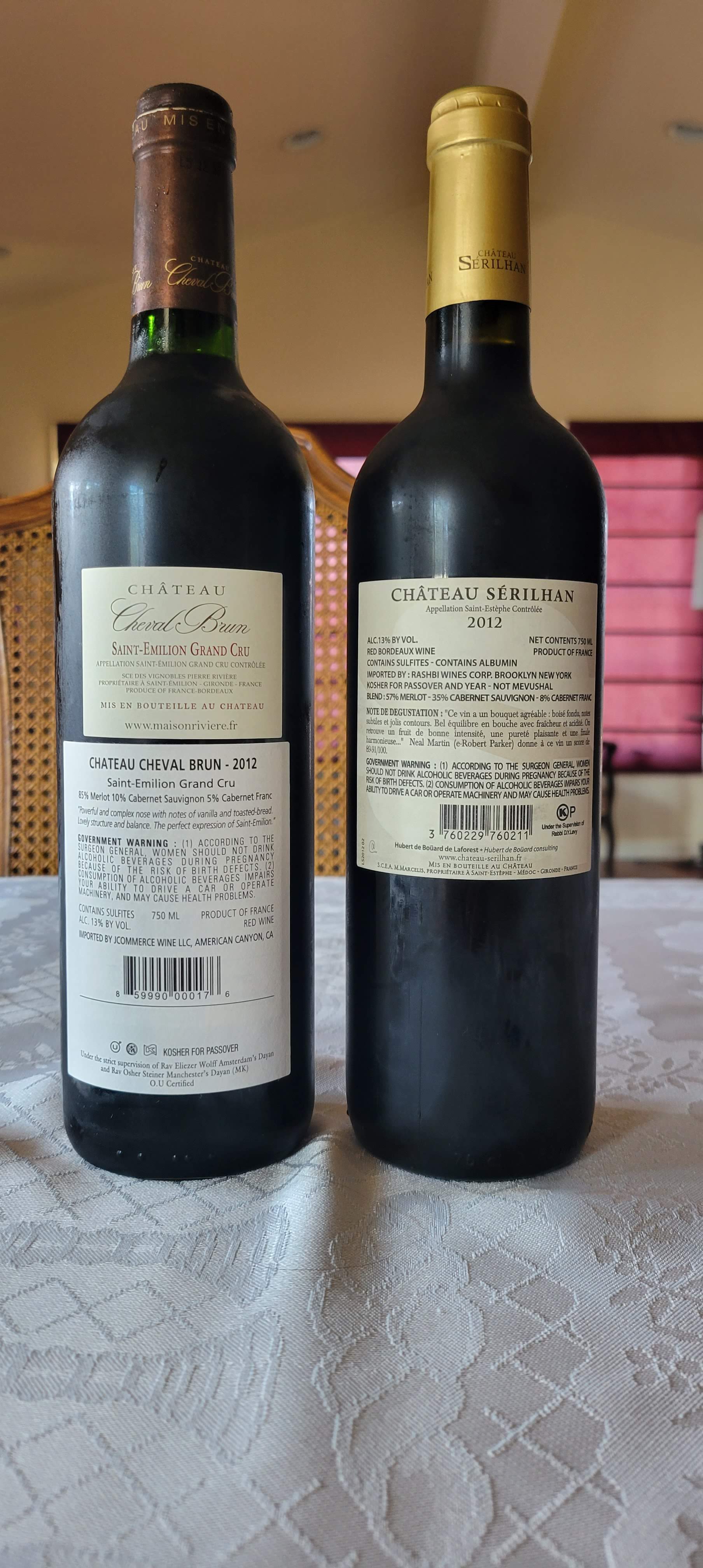
2012 Chateau Serilhan Cru Bourgeois, Saint-Estephe – Score: 93+ (QPR: WINNER)
This wine is a blend of 57% Merlot, 35% Cabernet Sauvignon, and 8% Cabernet Franc, The nose of this wine is lovely, deeply mineral-driven, with intense rock, graphite, charcoal, ripe black fruit, balancing tart raspberry, red plum, sweet spices, and sweet oak.
The mouth of this medium-plus bodied wine is rich, layered, and well-balanced with great acidity, freshly tilled earth, mineral, smoke, hints of barnyard, mushroom, and truffle, followed by ripe blackberry, plum, dark tart raspberry, smoke, and beautiful fresh wine approach – bravo!
The finish is long, dark, green, ripe, but well balanced, with smoke, tobacco, dark chocolate, and lovely mushroom, with tertiary notes soon approaching. This wine was opened too early, such is life, still very lovely and a wine I would open again in 4 years. Drink until 2029. (tasted July 2022) (in San Jose, CA) (ABV = 13%)
2012 Chateau Cheval Brun, Saint-Emilion Grand Cru – Score: 91+ (QPR: GOOD)
This wine is a blend of 85% Merlot, 10% Cabernet Sauvignon, and 5% Cabernet Franc.
The nose of this wine is another giant Brett bomb, with crazy mushrooms, rich green notes, earth, red fruit, smoke, and nice tar. The mouth of this wine is layered, ripe, and lovely, with nice elegance, showing blackberry, raspberry, mineral galore, graphite, earth, mushroom, and forest floor, The wine’s extraction has calmed down but the Brett and barnyard are in full gear.
The finish is long and earthy, with mushroom, barnyard notes, rich tobacco, and tar. Bravo! Drink till 2025, maybe longer. (tasted July 2022) (in San Jose, CA) (ABV = 13%)
A few good red wines along with too many misses – Jan/Feb 2022 Tasting
This is my second QPR (Quality to Price Ratio) WINNER Hit and Miss post of 2022 and while this started in January as a poor showing, I had two more wines in February that made the overall post much better. We started with one QPR WINNER and that grew to three WINNER by February. Still, the star of the show was the first QPR WINNER, the 2016 Terra di Seta Chianti Classico, Assai, Gran Selezione, Chianti Classico!
This post is filled with many more examples of what people are raving about from Israel, the 2018 red vintage, and all I can say is, yes they are not date juice! They are not uncontrolled madness, they are OK, they lack acidity and mostly they are copy and paste of each other with different fruit. Still, an improvement over other vintages. Essentially, much like the 2016 vintage, another highly vaunted vintage, which I described to my buddy EA as: “milk chocolate, either blue or black fruit, loads of cedar and tobacco – copy and paste wines”.
I wish it was better, even when God forces a winery to make good wine by keeping the temperatures at bay, they still make mediocre stuff. Such is life! Thankfully, we are blessed with Terra di Seta, aka TDS, which won my first ever winery of the year in 2019 and a winery that I have been touting for many years now! The newly released 2016 Terra di Seta Chianti Classico, Assai, Gran Selezione, is a stunning wine and maybe their best Assai so far!
The next two QPR WINNER are the 2019 Herzog Winery Cellars Cabernet Sauvignon, Alexander Valley, and the 2020 Chateau Signac Pliocene, Cotes du Rhone. I must say, the 2019 Herzog is shockingly ripe but the level of acidity it has really helped to tamp down the fruit and with time they all work together to make a harmonious wine. Still, it is ripe to start so leave this wine alone for many years. The 2020 Chateau Signac Pliocene, on the other hand, is lovely and ready to go. It is NOT as ripe as the 2018 vintage, but it is nice and very enjoyable for the next few years.
Finally, there is a repeat tasting of the 2019 Pavillon du Vieux Chantre, Puisseguin Saint-Emilion. As I stated in the Moises Taieb post, I needed to taste a few wines a second time and I am happy I did. The 2019 Pavillon du Vieux Chantre showed beautifully and just as I expected it to, after having tasted all the previous vintages. Thankfully, this wine is available in the USA in an easy-to-find location, from Andrew Breskin and Liquid Kosher.
The rest are OK, QPR score-wise, with only one wine garnering a score of GREAT, which is the 2017 Ma’ayan Asis Blend, these are relabeled wines from Tom Winery. The Tzora was nice but overpriced for what it gives.
I also tasted three 2019 Pinot Noirs and the clear winner, of those three, was the 2019 Goose Bay Pinot Noir, Small Batch. It is a lovely wine and one to enjoy over the next couple of years.
The wine notes follow below – the explanation of my “scores” can be found here and the explanation for QPR scores can be found here:



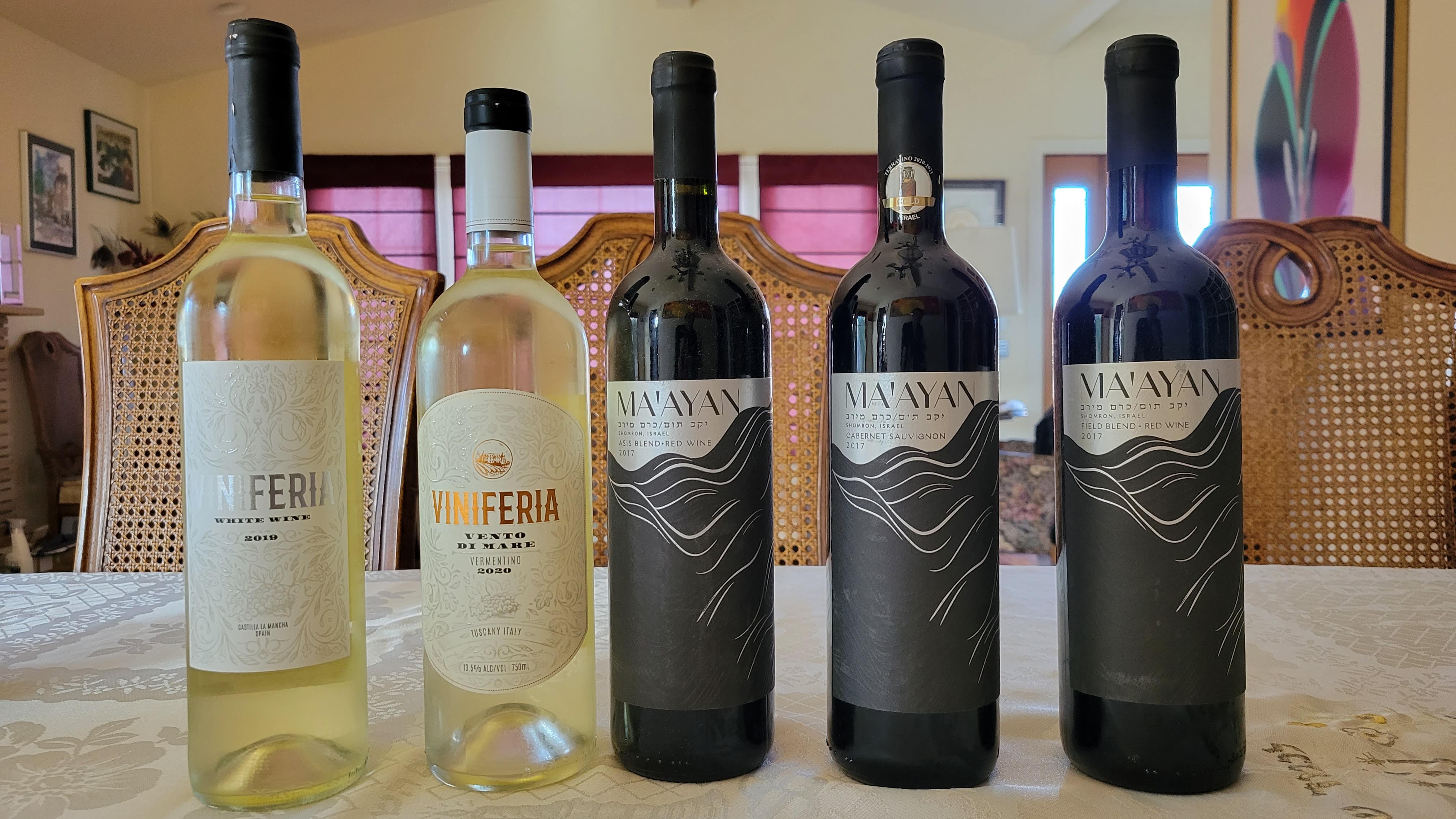
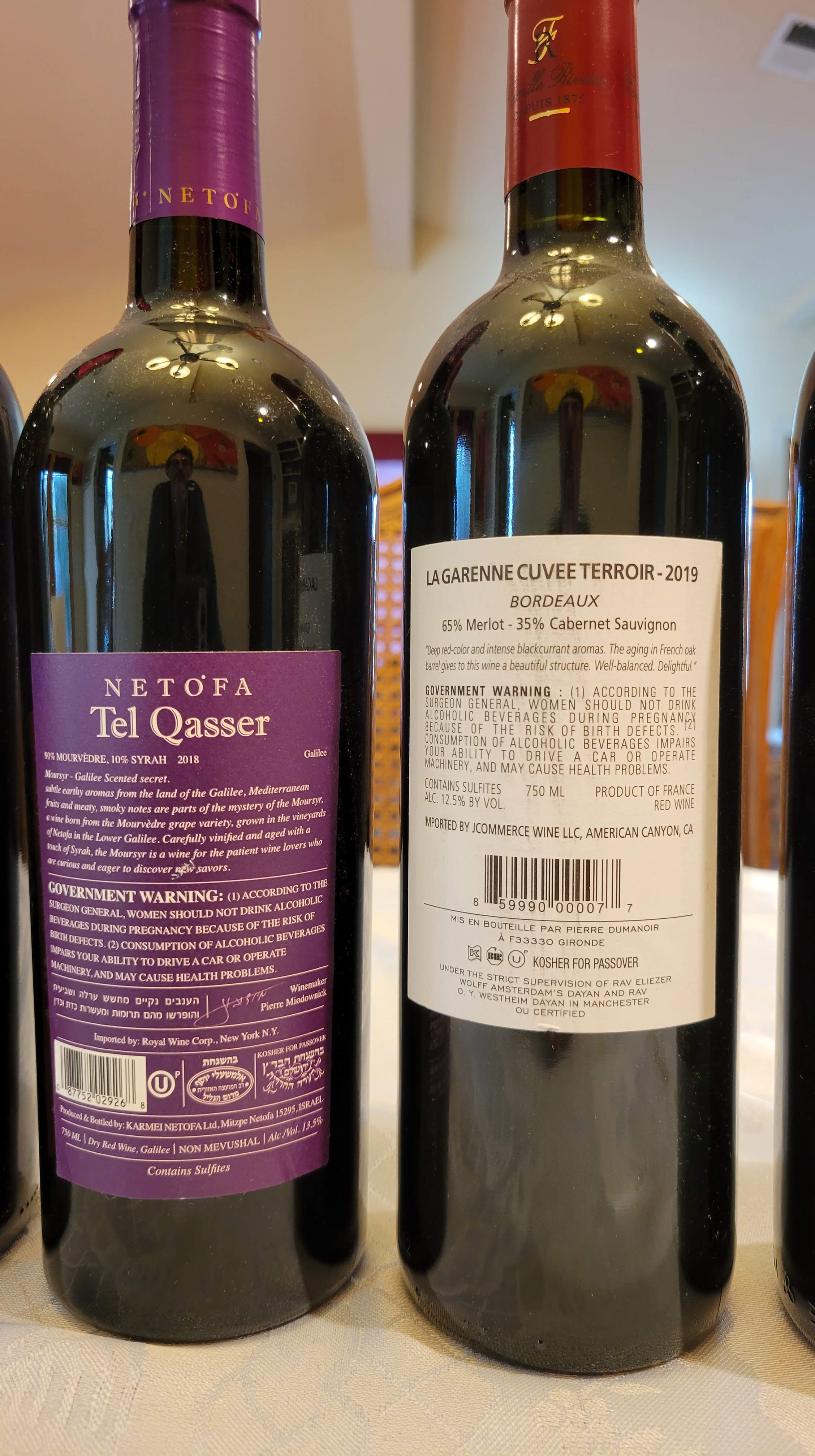
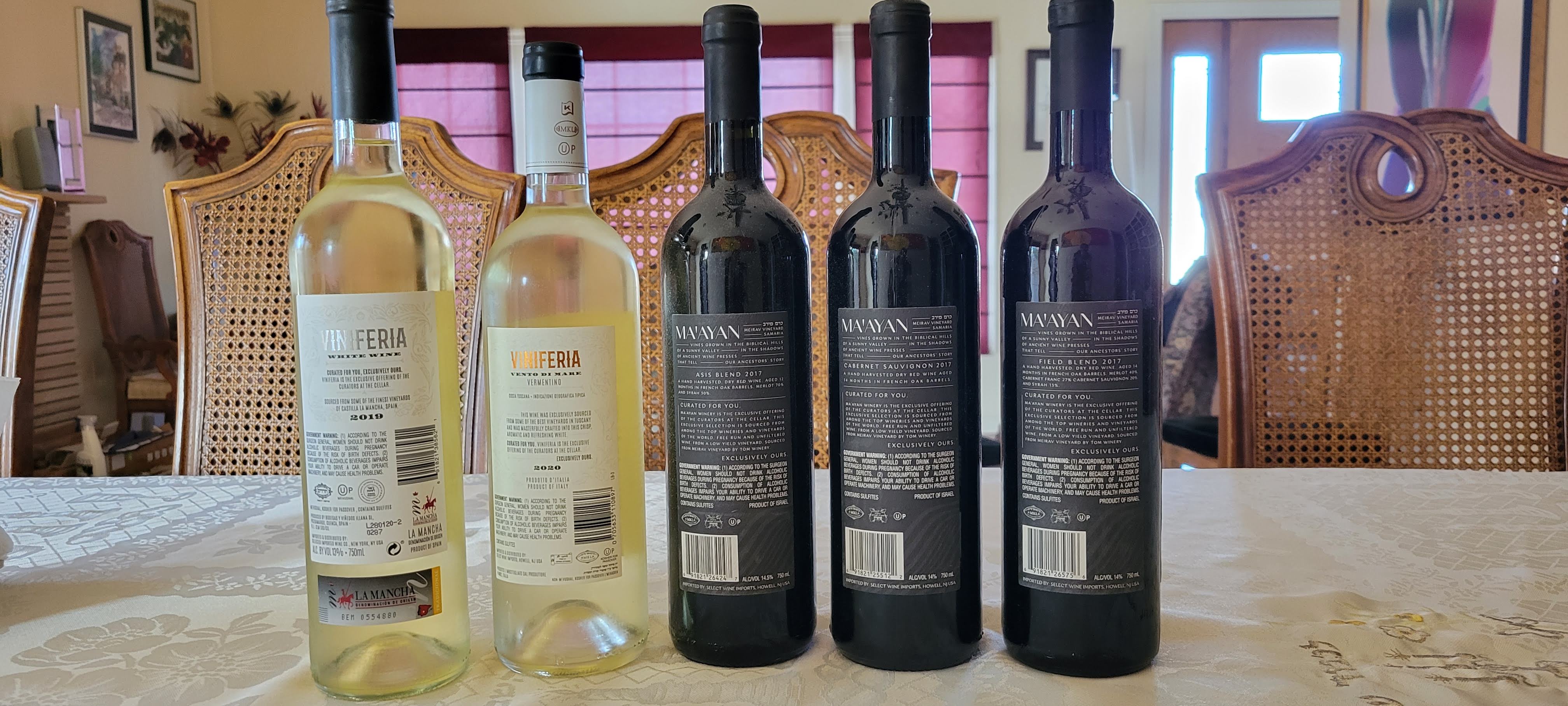
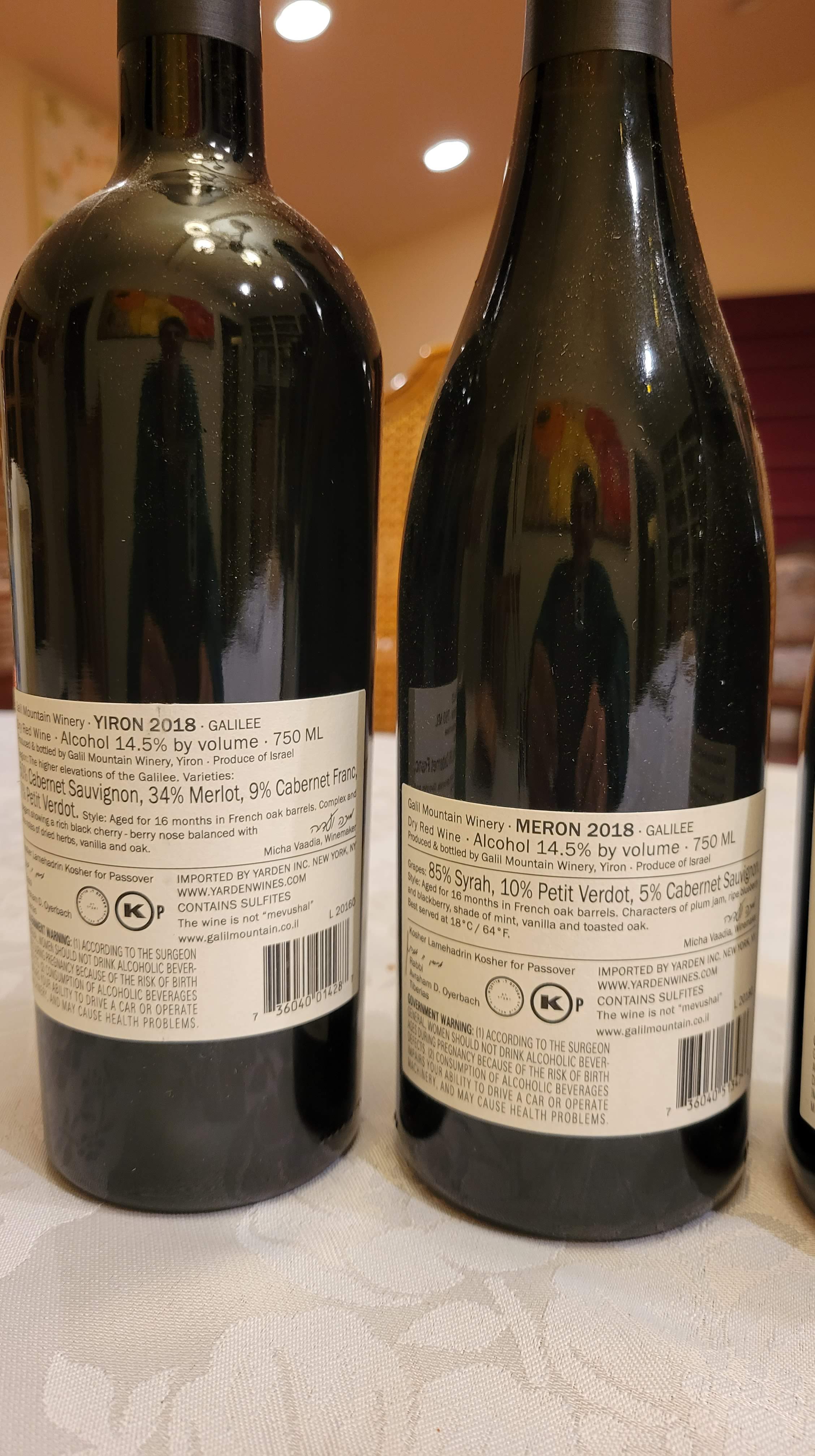
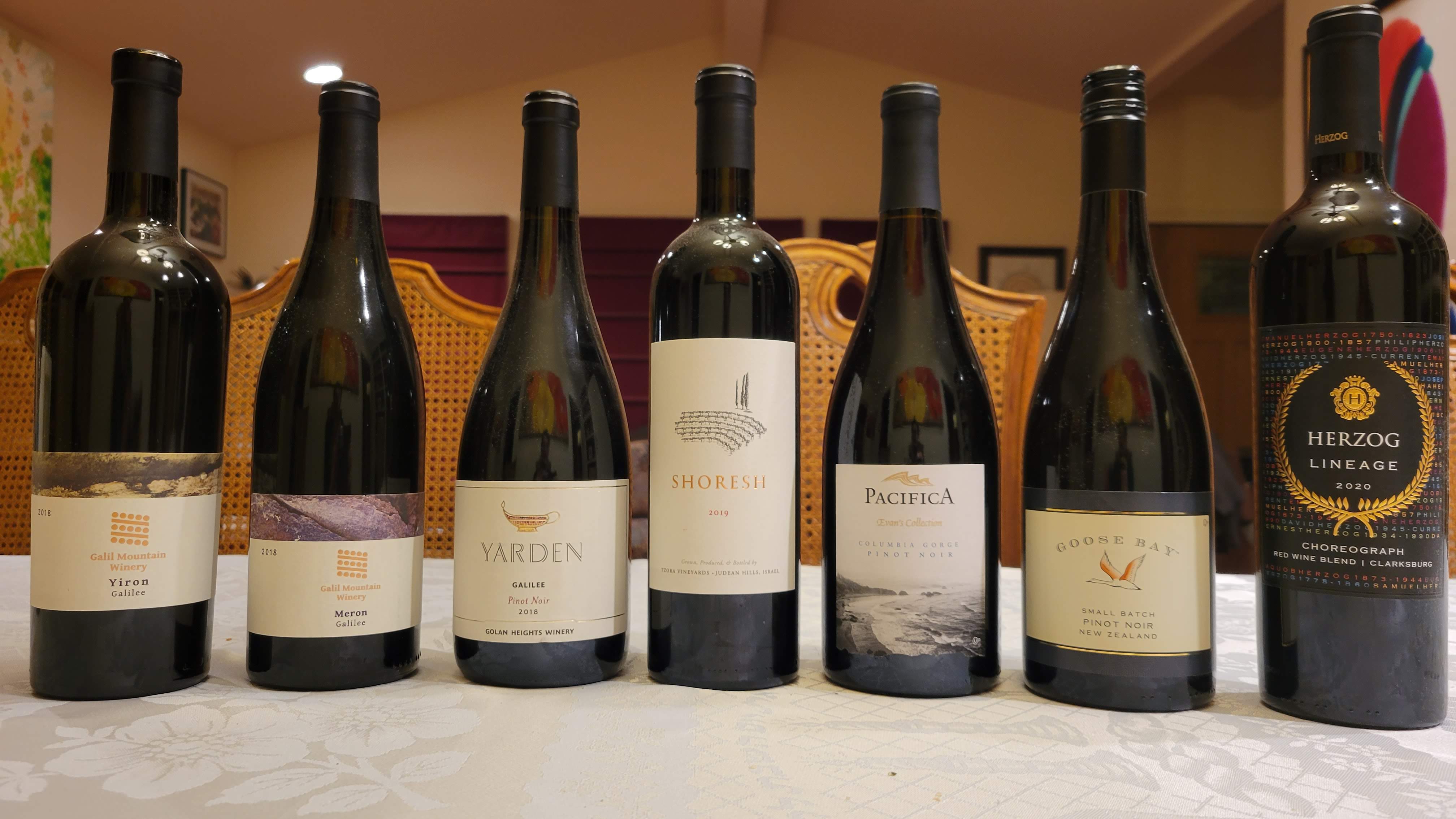
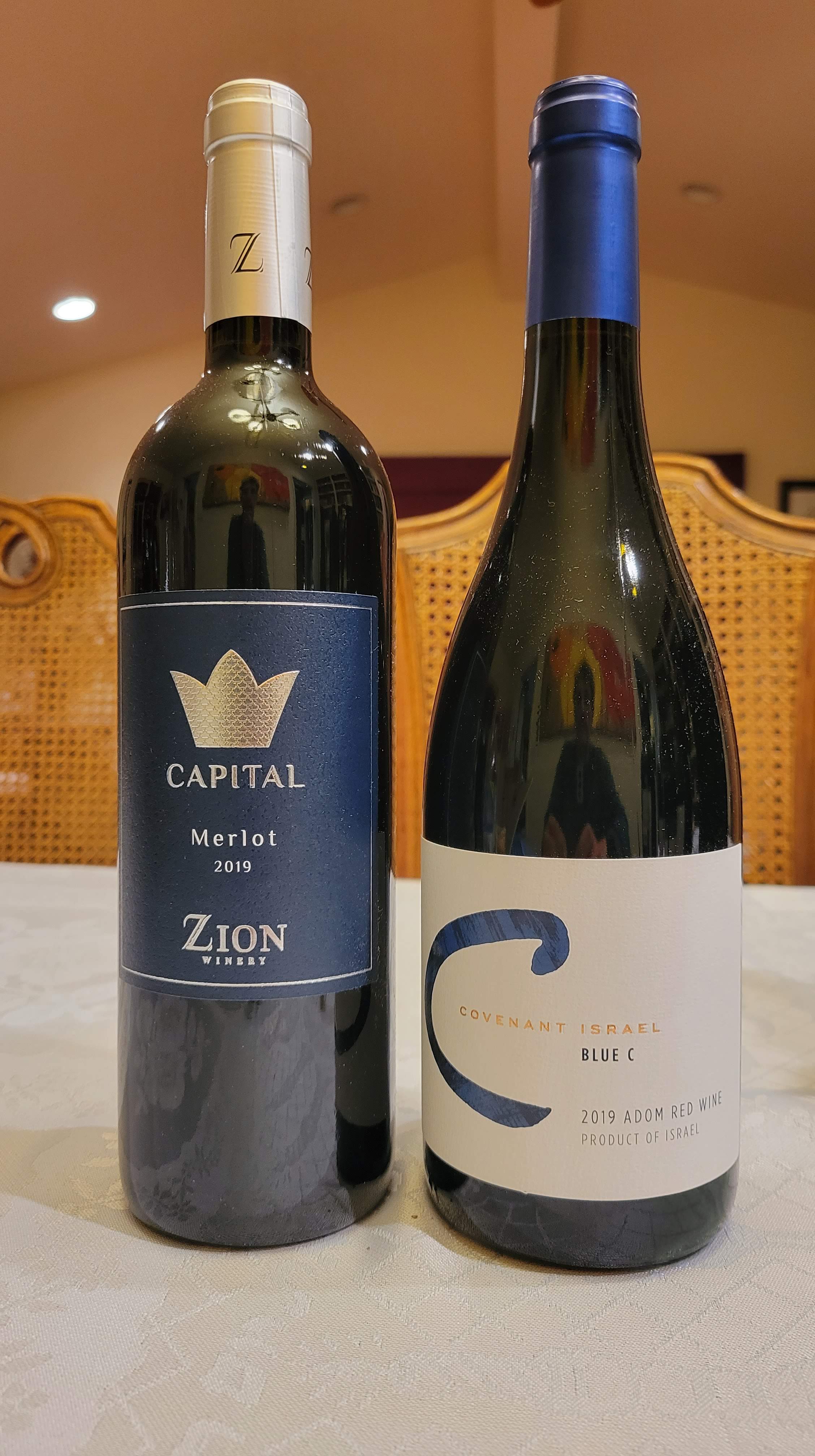
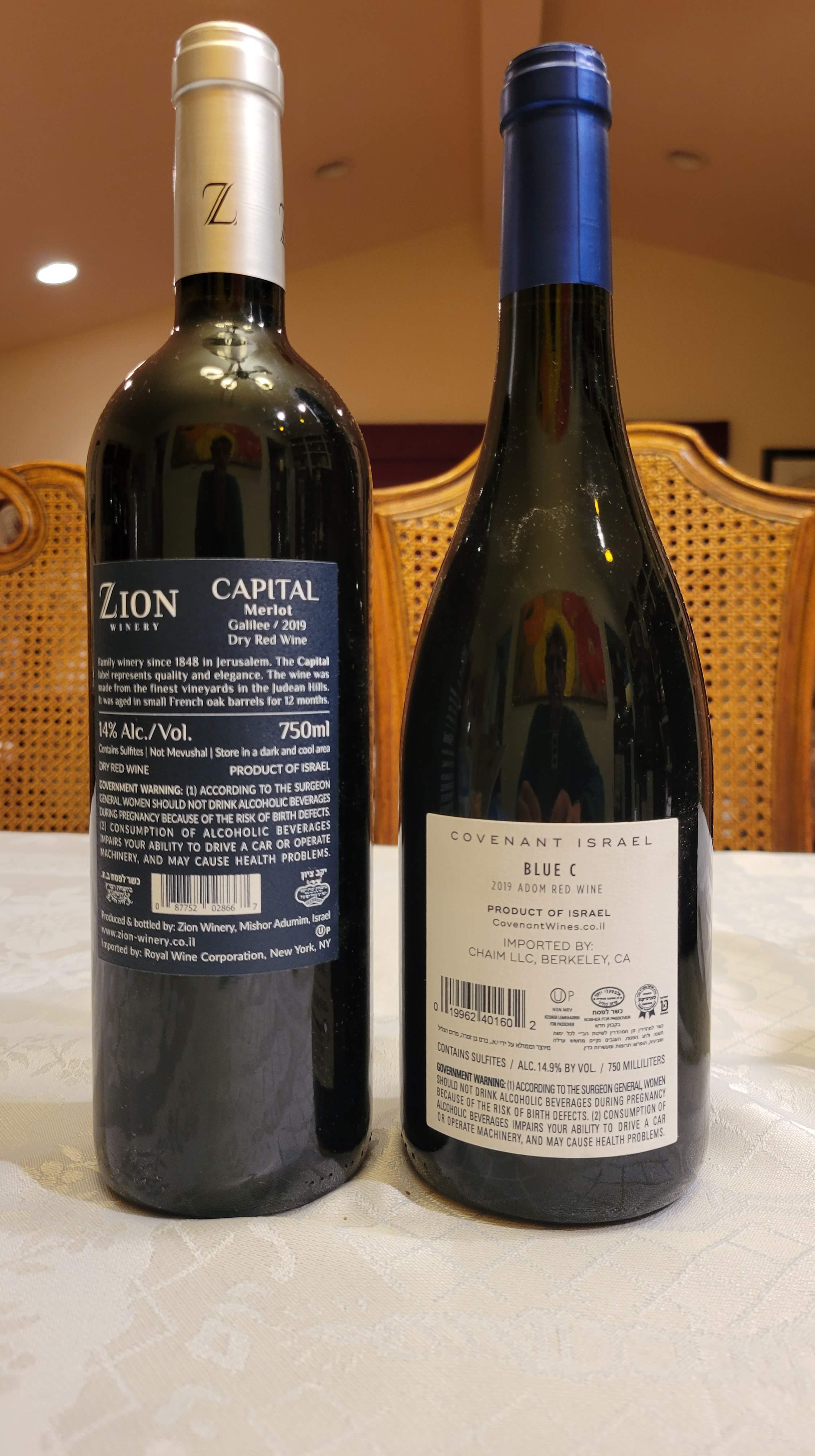
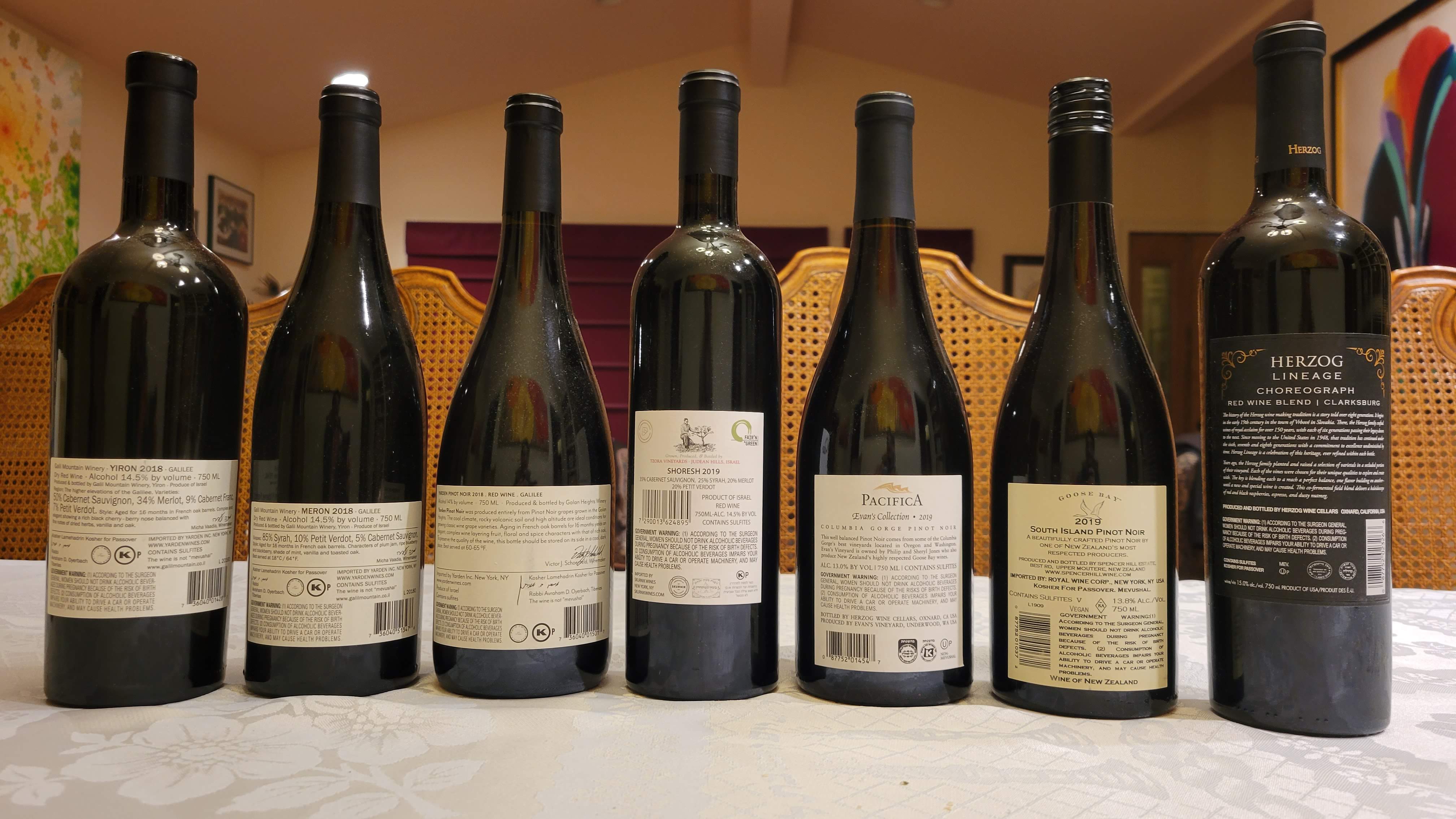

2016 Terra di Seta Chianti Classico, Assai, Gran Selezione, Chianti Classico – Score: 93.5 (QPR: WINNER)
This vintage of Assai is its best and this wine is 100% Glorious, rich, elegant, focused, balanced, fruity, but tart, refreshing and concentrated – WOW! BRAVO!!! The nose on this wine is pure heaven, it is soy sauce, funk, forest floor, mushroom, fruity, red and black fruit, tar, smoke, violet, very floral, wild herbs, and rich mineral. The mouth on this medium to full-bodied wine is ripe, concentrated, but well-controlled, with ripe plum, dark strawberry, candied raspberry compote, with menthol, licorice, baking spices, all wrapped in dense sweet oak and elegant draping tannins, just incredible! The finish is long, dense, dark, rich, layered, concentrated, yet perfectly balanced, with screaming acidity, rich espresso coffee, mushrooms, almost truffle, forest floor, mineral, charcoal, graphite, and star anise. WOW!!! Drink from 2026 until 2033. BRAVO!!! (tasted January 2022) (in San Jose, CA) (ABV = 15%)
More simple white, red, and rose Kosher wines, with some mid-range reds – with more WINNERS
As I close out the QPR posts for each of the wine categories, I forgot a few of the simple white wines – so here is a post of them. Please look at the past simple white wines post for more on QPR and the simple white wine category. Again, QPR (Quality to Price Ratio) is where kosher wine needs to go. QPR means well-priced wines. Still, people do not get QPR. To me, QPR WINNER is what I describe and explain here. The overall revised QPR methodology is described here (and linked from the WINNER post as well).
One more reminder, “Simple” white wines is a wine that will not age more than seven or so years. So, please no hate mail! There are many WINNERS here, enjoy! I also threw in a few roses with one WINNER, but it is a 2019 Rose, and 2020 roses are about to be released, so drink up those 2019 roses already. I also tasted a few reds, with the 2017 Les Lauriers de Rothschild getting a slightly higher score.
The clear WINNER of this tasting is the 2019 Chateau Lacaussade, Vieilles Vignes, Saint-Martin. That along with the 2018 Koenig Riesling, which I like more now than I did a year ago. Also, the 2017 Les Lauriers de Rothschild. The 2017 Les Lauriers de Rothschild, Montagne Saint-Emilion was a winner in my previous post, I just slightly raised the score on it.
The wine note follows below – the explanation of my “scores” can be found here and the explanation for QPR scores can be found here:
ROSE Wines (DRINK them now – if you must)
2019 Rubis Roc Rose – Score: 91 (QPR: WINNER)
This wine is a blend of 50% Cinsault and 50% Cabernet Sauvignon. This is a weighty and food-required style rose than a refreshing rose. The nose of this wine is fresh and alive, with meaty notes, showing red and blue fruit notes, with nice citrus, with good attack and herbs. The mouth on this medium-bodied wine is solid, a drop less acid than I would like, but still very good with hot peppers, green notes, blue fruit, raspberry, dried lime/lemon, with mineral, and nice spice. The finish is long, green, and enjoyable, with good structure and nice minerality, nice! Drink now. (tasted Oct 2020)
2019 Yaacov Oryah Pretty as the Moon Rose– Score: 89+ (QPR: POOR)
This rose is a blend of 45% Syrah, 40% Grenache, and 15% Petite Sirah. The nose on this wine is divine – a lovely nose of floral violet, loads of rosehip, followed by a bit of nice funk, dried and tart cranberry, along with loads of mineral, this smells like what I want from a Provence wine, with dried/tart red fruit, a bit of reductive oxidation, and green notes as well. The mouth on this medium-bodied wine is nice but the acidity is where the wine fails, it has acidity, but the wine’s profile, which has nice fruity and refreshing characteristics lacks the punch of bright acidity to bring it all together, still, showing mineral, and lovely red fruit, with tart strawberry, lovely green/tart apple, quince, watermelon, hints of passion fruit, and loads of mineral. The finish is long, complex enough, with slate, graphite, more flowers, and lovely freshness, WOW! Bravo! Drink now! (tasted Oct 2020)
And the winner of KFWE NYC and L.A. 2019 goes to the City of Angels
If you have been keeping up with my travels around the world to visit the KFWE venues, you will know that I really was impressed with what Bokobsa did in Paris and I was split over the London KFWE, given its posh settings and solid wine selection, though it has where to grow.
Before I go further, I wanted to define to you my criteria for grading a wine tasting:
- The Venue, of course, its ambiance, and setup
- The wine selection
- The wine glasses
- The number of humans at the tasting
- the food served
- Finally, the reactions of the participants, though for me that is less important to me, as I judge the tasting based more upon the body language of the participants than what they say.
Now, some of these variables are subjective, rather than just objective. Take for example #1, the venue, it is a highly subjective though also objective variable. Pier 60 is a nice place, but in comparison, the Peterson museum of the past few years in Los Angeles was far better. Now, again, this is subjective, some people hate cars. They hated how big the Peterson was, and how spread-out the food and wine was. I loved the Petersen, loved the cars, and while the food and wine were spread out and difficult to find, the roominess and vast space to sit and enjoy art and wine at the same time, was truly impressive.
App and its data needs serious work
One more thing, as I stated in my KFWE recommendation list – the KFWE App is a disaster. It rarely worked. When it did, it was so annoying it was hopeless. Take for instance the go back button went back to the main wine list. So if you wanted to go through the list of Elvi or Capcanes wines, you had to go back and forth OVER and OVER. Worse, and I mean far worse, was the data behind the app, the data was all wrong. The wines at the event did not match the wines in front of you at the tables.
I really hope that next year, Royal Wines puts in more effort into building a proper app, with proper data. Even if the wines that are delivered are different than the wines on the app, change the data! Make sure the data matches reality instead of dreams and rainbows.
Mother Nature took kindly to KFWE in NYC and LA (well mostly)
A quick footnote here, before we dive into the highly contested and dispassionate discussion around which KFWE is the best KFWE, we need to thank the good mother! Mother nature really threw us a pair of bones this year! Yes, I know that flying from NYC to LA was a bit torturous for some, and yes, I sat/slept in my middle seat all the way to LA, but come on, it was that or we get 6 inches of snow a day EARLIER and KFWE NYC would have looked more like a Flatbush Shtiebel during the summer, AKA empty!
Sure, traveling to LA was a pain, but it all worked out, even those who flew to LA on the day. Further, while mother nature opened the skies on the day following KFWE L.A., with what the meteorologists loved to call an atmospheric river, it was the DAY AFTER KFWE L.A. On the day of KFWE L.A. there was a light smattering of rain here and there. The next day, God opened the heavens, when we were driving in our Uber to the airport the streets were almost flooded, and this is L.A. which has a massive concrete drain snaking its way through Los Angeles, with which to dump and maneuver billions of gallons of rainwater.
Further, if we had been at the Petersen this year, the VIP and Trade would have been a mess. There was not so much rain, as it was just not nice outside, this is an El-Nino year in Califonia, and that means more rain than normal here in Cali! So, all in all, God was kind to Royal and the KFWE circuit. The weather was just right, along with some intelligent decisions, turned out to be true blessings for all, especially us Californians who really need the rain! Read the rest of this entry
Vitkin Winery visit – November 2018
As I stated in my last post, I was in Israel for a very short trip, but I wanted to get to Vitkin WInery to taste the new 2016 reds. Vitkin Winery was the first winery I visited and while I came with the entire group of guys to taste AK, AO, JK, OM, AD, and myself, things did not quite work out that way. Somewhere there was a miscommunication, and sadly there was no way to accommodate the guys. Sadly, Asaf Paz was not available, and while he made sure the tasting would happen, it was only me.
I have written before about Vitkin last year, the second year after he made the winery kosher! Yes, as stated last during the 2015 vintage, Asaf believed that it was time to go kosher, so why not make it on a shmita year! They moved from 60K bottles in 2014 to 100K bottles in 2015 and on. The hope there is that expansion would be possible by moving kosher. Royal Wines is the USA importer for their wines from 2016 and on.
The winery has grown from its early days in 2001 to now making 100,000 or so bottles of wine, and though it has space for more, it will stay there for now. We arrived during the crush for Grenache, so it was fun to see how the tanks are situated in the winery. They do not use pumps to move the wine must to the top tanks, but rather they use hydraulics to move the bins to the top of the tank and drop them into the tank. This makes sure that the fruit and it’s must is not crushed a second time, allowing for better wine. After the wine is finished fermenting, using gravity the grapes and the must are placed into the press and then the resulting wines are then dropped into the barrels. Tank to press to barrels all using gravity, with an assist from the hydraulics at the start. This is not a new scheme, it can be seen all over France, but it is nice to see it in Israel as well (Galil Mountain winery also does this along with others, but not many family-run boutique wineries show such care and concern).
Vitkin has three main lines of wines; Israeli Journey, Vitkin, and Shorashim (the elite wines), and some dessert wines as well. The kosher line started in 2015 and so initially the whites and rose were the only available options. Of the wines, we tasted this year, the rose is in the Israeli Journey line, along with the white Israeli Journey. The other three whites; Riesling, Gewurztraminer, and Grenache Blanc are all in the Vitkin line, with the Grenache Blanc and The Gewurtztraminer adding the Collector’s Edition moniker. The current red wines that are kosher all fall into the Vitkin wine label, both the 2016/2017 Vitkin Israeli Journey, Red, along with the 2016/2017 Vitkin Pinot Noir, the 2016 Vitkin Cabernet Franc, the 2016 Vitkin Petite Sirah, old vines, Collector’s Edition, and the 2016 Vitkin Carignan, old vines, Collector’s Edition.
They did make a special run of wine called Emek Hafer, as a private label for a client. I only tasted the Cabernet Sauvignon, in a blind tasting and I was not impressed, though I did not taste the Sauvignon Blanc. Read the rest of this entry
My top 25 kosher wines of 2017 including wine of the year and best wine of the year awards
I wanted to make this post short and sweet – so the criteria are simple I could care less about price, color, or where it was made. All that matters is that it is/was available this year sometime to the public at large and that I tasted it in a reliable environment, not just at a tasting, and that it was scored an A- to A or higher. Also, there are a few lower scoring wines here because of their uniqueness or really good QPR. I also included some of the best wines I tasted this year – they are at the bottom.
This year I am adding the “wine of the year”, and “best wine of the year”. Wine of the year will go to a wine that distinguished itself in ways that are beyond the normal. It needs to be a wine that is easily available, incredible in style and flavor, and it needs to be reasonable in price. It may be the QPR wine of the year or sometimes it will be a wine that so distinguished itself for other reasons. This year, it is not the QPR King of 2017, that went to the 2016 Chateau Les Riganes. No, this year “the wine of the year” is indeed a QPR superstar, but not the king, it is the 2014 Herzog Cabernet Sauvignon, Special Reserve, Alexander Valley. The best wine of the year, well that was easy, it is the 2015 Chateau Leoville Poyferre. So, yes, that means that the top wines of the year are both made by Royal wines, such is life, and I could care less for the most part.
Again, the list is missing wines I have yet to taste, like the 2015 Chateau Pape Clement, which I am sure would have been on this list if I had tasted it, or the 2015 Hajdu Proprietary Red. There are also interesting wines below the wines of the year, think of them as runner-up wines of the year. There will be no rose wines on the list this year – blame that on the poor crop or rose wines overall, they did not even crack the interesting list. Also, this year, we were given a bounty of top wines and finding the list this year was really a task of removing then adding.
The supreme bounty comes from the fact that Royal released the 2014 and 2015 French Grand Vin wines within the same year! The 2014 vintage wines were released in 2017 and the 2015 wines were released (in France in 2017 as well)! Throw in the incredible number of kosher European wines that are coming to the USA and being sold in Europe and this was truly a year of bounty for European kosher wines.
Now, separately, I love red wines, but white wines – done correctly, are a whole other story! Sadly, in regards to whites all we had this year that were exceptional, were epic Rieslings from Germany (Von Hovel) and the fantastic sweet wines from Sauterne and Yaacov Oryah. But dry white wines from elsewhere in the world was sadly lacking. There were a few exceptions, and they were all Chardonnays, but to me, the winner in that story (dry white wine that was not a German Riesling), was the 2015 Herzog Chardonnay, Reserve, Russian River. It does not rate in the wine of the year list, but it is in the interesting wines below. The new Chablis is also nice, as is the Shirah Whites.
Some of these wines are available in the USA, some only in Europe, and a few only available in Israel.
Finally, some of these wines are hard to find and they may have different siblings – but they are worth the effort. The wine notes follow below – the explanation of my “scores” can be found here:
The 2017 kosher wine of the year!
This one was a no-brainer to me. The 2014 Herzog Cabernet Sauvignon, Special Reserve, Alexander Valley is a crazily affordable wine that got rave reviews from me and from the press. Congratulations to Herzog Winery and Royal Wines.
2014 Herzog Cabernet Sauvignon, Special Reserve, Alexander Valley – Score: 92 to 93 (QPR Superstar)
Lovely nose, impressive elegant and old world nose, peaking with a blackcurrant showing blackberry and lovely smoke and tar. The mouth is old world, wow, give me a break, in ways the wine is crazy better than the Warneke (Special Edition), but with years the Warneke will pass it. The mouth on this medium body, is great layered and rich, green, spicy, and rich with concentration, with sweet oak and sweet dill galore, with green notes, loads of foliage, showing dried strawberry, ripe raspberry, black forest berry, all wrapped in mouth coating and drying tannin, with earth and spice. The finish is long, and richly green, with nice spicy notes, leather and scraping mineral, showing bright and ripe fruit that is impressive, elegant, rich, and layered, with licorice, graphite, and forest floor that lingers long. Bravo!! Drink from 2020 till 2030.
The 2017 best kosher wine of the year!
This one was really tough. First of all, the one I chose is not available yet for purchase in the USA. Also, in terms of score, it did not beat out the Von Hovel Rieslings of 2014 or the 2014 Tour Blanche Sauternes, or the 2015 Chateau Giscours, or the 2014 Chateau Smith Haute Lafitte. In the end – for its sheer awesomeness it beat out a very crowded field. In the end, the winner of the BEST kosher wine of 2017 goes to the 2015 Chateau Leoville Poyferre, and it deserves the crown – bravo!!
2015 Chateau Leoville Poyferre – Score: 95
This wine was very close to what we tasted from the barrel. The nose on this wine is rich and black, with floral hints, smoke, mineral, and really pushed for now, but incredible and redolent with a perfume of ripe fruit, chocolate, and green notes. The mouth is rich and layered with an incredible finesse of perfection, richly extracted and incredible with rich mineral and saline that is so perfectly hedonistic it is impressive, with chocolate heaven, showing earth, loam, finesse, and elegance beyond explanation, showing soft yet focused with a tight-mouthfeel, with rich raspberry, blackberry, ripe plum, all focused and concentrated with perfection. The finish is long and rich and paired with an acid and mineral that is never-ending, almost ripe and tart at the same time, with draping tannin, graphite, and charcoal with expressive and focus. Drink from 2022 to 2040.
Rest of the top 25 kosher wines of 2017
2015 Chateau Grand Puy Ducasse – Score: 94
This wine was very close to what we tasted from the barrel. What a nose, this wine is mostly Cabernet Sauvignon and a drop of merlot. This nose is green and red and really mineral focused with dark but red fruit focused, showing lovely elegance, dirt, and herb. The mouth is medium bodied with rich extraction, rich currant, red fruit, with dirt in the background, wrapped in rich and searcing tannin mouthfeel, with roasted herb, and rich tobacco that is backed by elegance and control, blackberry, plum, that gives way to dark chocolate epic control, foliage, and oregano that lingers long with graphite, pencil shavings, and rich leather. Drink from 2024 to 2034
2015 Chateau Giscours – Score: 95
This wine was very close to what we tasted from the barrel. The nose on this lovely wine is super dry, with more of a classic Bordeaux nose, less ripe than some of the previous wines, with the ever classic blueberry notes of Giscours, with black and red fruit galore backed by roasted herb, rich mineral, and lovely saline. The mouth is rich, incredible, massive, full-bodied and incredibly extracted with rich saline, with layers of unstoppable concentrated fruit, with blackberry, raspberry, with blueberry, rich spice, mushroom, and herb. The finish is never ending with green notes, roasted herb, incredible drying tannin, with a deep fruit base followed by the mineral, black fruit, earth, graphite, and rich spice, cloves, and dark chocolate. BRAVO! Drink from 2023 to 2035
2015 Chateau Lascombes – Score: 94.
WOW, how this wine changed from when we tasted it in the barrel. This wine is a blend of 50% Cabernet Sauvignon, 46% Merlot, and 3 to 4% Petit Verdot. It is the flagship wine of Chateau Lascombes. The nose on this wine is even crazier than the Chevalier, showing more umami and soy sauce if that is possible, with incredible finesse, showing massive power, but great mineral and concentration, with black and red fruit, foliage galore with tar and roasted animal. The mouth is full bodied and incredible with the same style as the Chevalier, but with more finesse, mouth coating soft tannin that is extracted with blue fruit, earth, rich concentration, with more saline and power, yet showing incredible precision that is coating and impressive. The finish is long and lovely, with saline, mineral, tobacco, refined dark chocolate, and rich mushroom. Incredible! Drink from 2022 to 2032. Read the rest of this entry
Recanati Winery’s latest releases
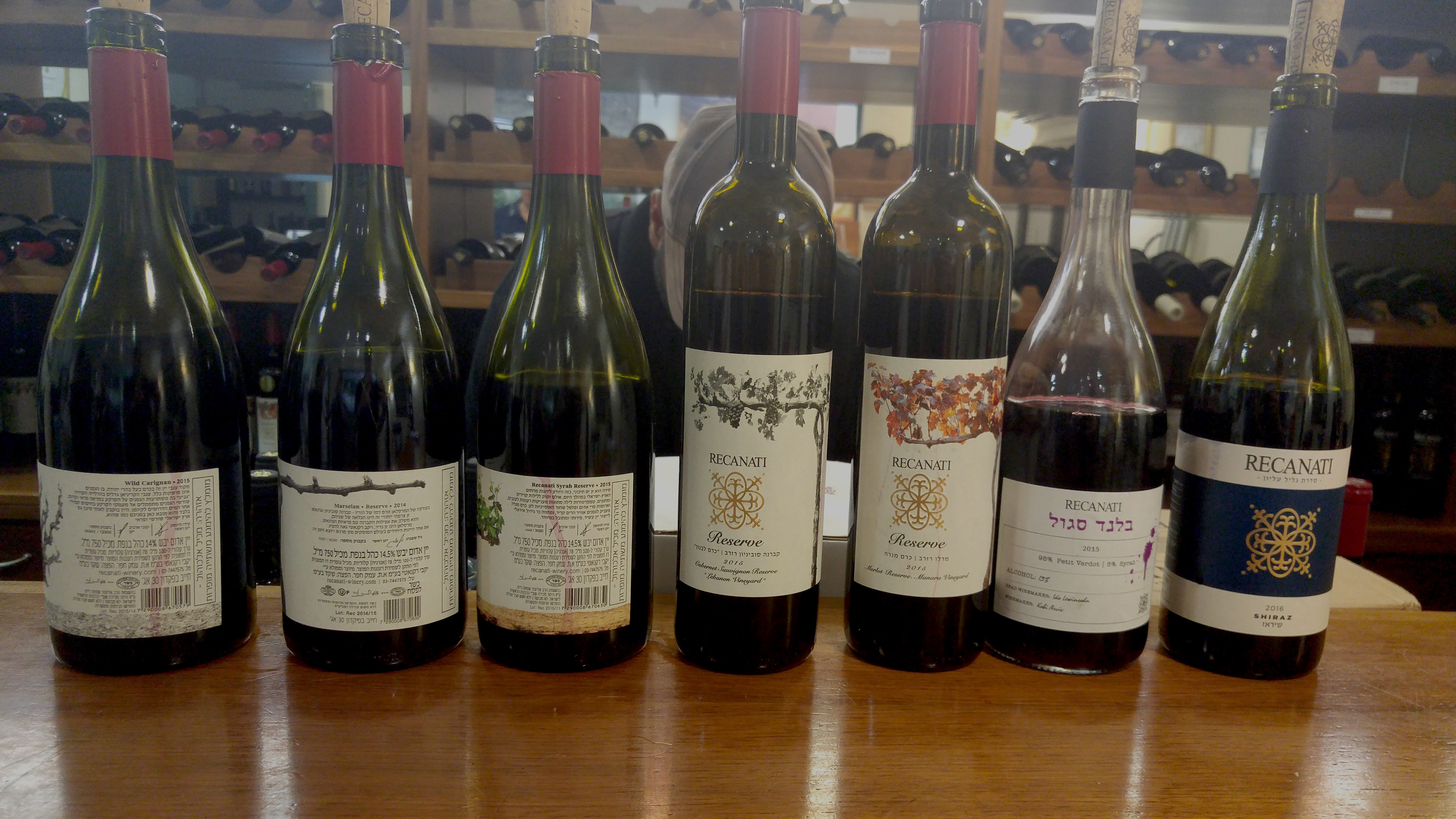 As I stated in my last post, I landed in Israel and I had very few days to see a lot of wineries. Recanati Winery was the second winery I visited. Kobi Arviv, who is now the head winemaker at Recanati Winery. He is also the head winemaker at his own winery, Mia Luce Winery, and had been the associate winemaker at Recanati Winery, until June this year.
As I stated in my last post, I landed in Israel and I had very few days to see a lot of wineries. Recanati Winery was the second winery I visited. Kobi Arviv, who is now the head winemaker at Recanati Winery. He is also the head winemaker at his own winery, Mia Luce Winery, and had been the associate winemaker at Recanati Winery, until June this year.
I have posted in the past about Recanati Winery, and the only real change since that post is that Kobi is now the new head winemaker and that their wines had moved riper in the past few years, my hope is that they return to the control they showed in 2010 and 2011. Since then, it seems they have moved to riper wines, like the rest of Israel.
The wines have stayed the same for the most part, with slight changes to the makeup of some of them. The biggest change overall is to the labels and some new fun and easy drinking reds and whites have been added in.
- Yasmin/Jonathan – these are the entry-level labels, that are also mevushal
- Upper Galilee Series – these used to be the diamond series or the baseline series. Not much has changed here other than the labels, though they have been a bit riper these past few years.
- Then the roses along with this new French Blend wine. The roses have become dryer and are lovely, but the French blend is too sweet for me.
- Specials – these are fun and well-made wines that are made for either restaurants or the Derech Hayayin stores in Israel.
- Single Vineyard Wines (Also called Reserve Wines) – this is the largest change of them all – labels wise. Here they have moved the Med series under the single vineyard label concept, though the labels themselves have not really changed. Actually, the reserve wines of old have folded under the Med series and now all the wines show the vines from which the wine was made. This is where the new Marawi wine lives.
- Flagship wines – what used to be called Special Reserve wines are now flagship wines. It consists of the red and white Special reserve wines.
While the number of labels may have expanded and their look changed, the essence of the winery which was the thrust of my previous post has not changed at all. The winery’s main focus is quality, and for most people, that continues to be the winery’s rallying cry. The prices of the single vineyard wines have gone up, which to me is a real problem because another of Recanati’s rallying cries was price control, and to me, they have lost control of that one, at least here in the USA. I think that issue is a combination of Palm Bay making hay while the sun shines (Wine Advocate, Wine Enthusiast, and others), and Recanati moving its prices up a bit as well. Read the rest of this entry
Vitkin Winery’s latest releases
 As I stated in my last post, I landed in Israel and I had very few days to see a lot of wineries. Vitkin Winery was the first winery I visited and I finally got the chance to taste the entire kosher line. Asaf Paz, is the head winemaker there now, after spending so much time helping at Vitkin for years, he is finally at home in his family’s winery for good I hope.
As I stated in my last post, I landed in Israel and I had very few days to see a lot of wineries. Vitkin Winery was the first winery I visited and I finally got the chance to taste the entire kosher line. Asaf Paz, is the head winemaker there now, after spending so much time helping at Vitkin for years, he is finally at home in his family’s winery for good I hope.
I have written before about Vitkin in passing last year when I tasted his 2015 wines, the first year he made the winery kosher! Yes, as stated last year, Asaf believed that it was time to go kosher, so why not make it on a shmita year! They moved from 60K bottles in 2014 to 100K bottles in 2015 and on. The hope there is that expansion would be possible by moving kosher. Royal Wines is the USA importer for their wines from 2016 and on.
The winery has grown from its early days in 2001 to now making 100,000 or so bottles of wine, and though it has space for more, it will stay there for now. We arrived during the crush for Grenache, so it was fun to see how the tanks are situated in the winery. They do not use pumps to move the wine must to the top tanks, but rather they use hydraulics to move the bins to the top of the tank and drop them into the tank. This makes sure that the fruit and it’s must is not crushed a second time, allowing for better wine. After the wine is finished fermenting, using gravity the grapes and the must are placed into the press and then the resulting wines are then dropped into the barrels. Tank to press to barrels all using gravity, with an assist from the hydraulics at the start. This is not a new scheme, it can be seen all over France, but it is nice to see it in Israel as well (Galil Mountain winery also does this along with others, but not many family-run boutique wineries show such care and concern).
Vitkin has three main lines of wines; Israeli Journey, Vitkin, and Shorashim (the elite wines), and some dessert wines as well. The kosher line started in 2015 and so initially the whites and rose were the only available options. Of the wines, we tasted the rose is in the Israeli Journey line, along with the white Israeli Journey. The other three whites; Riesling, Gewurztraminer, and Grenache Blanc are all in the Vitkin line, sadly there was no 2016 Riesling. The 2016 Gewurztraminer and Grenache Blanc, have the added collector’s edition moniker on them. The current red wines that are kosher all fall into the Vitkin wine label, both the 2015 Vitkin Israeli Journey, Red and the 2016 Vitkin Israeli Journey, Red, along with the 2015 Vitkin Pinot Noir, 2015 Vitkin Cabernet Franc, 2015 Vitkin Petite Sirah, 2015 Vitkin Carignan. The 2015 Vitkin Grenache Noir is the only red with the collector’s edition moniker.
There are two fascinating aspects of the wines produced the Vitkin Winery. One is that 50% of the bottles produced are either rose or white! Think about that for a second! Are you kidding me, that is really impressive if you ask me personally. Israel has changed so much in the last 10 years, in two core aspects. The Israeli public now drinks more wine, and they like white/roses, and the second is that red wines are turned riper – a drum I constantly beat – and one that is not changing yet. Read the rest of this entry

